The Way It Is/ When men were menby Gordon Kirby |
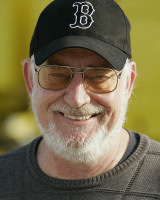 Writing last week's column about Jim Hall and his Chaparrals reminded me how much was achieved in such a short period of time by the great drivers and car builders of Hall's era. In today's environment, it's incredible to reflect on the many remarkable cars that were built, developed and raced in the sixties and seventies by great American racers like Hall, Dan Gurney, Parnelli Jones, A.J. Foyt, Roger Penske and Mark Donohue.
Writing last week's column about Jim Hall and his Chaparrals reminded me how much was achieved in such a short period of time by the great drivers and car builders of Hall's era. In today's environment, it's incredible to reflect on the many remarkable cars that were built, developed and raced in the sixties and seventies by great American racers like Hall, Dan Gurney, Parnelli Jones, A.J. Foyt, Roger Penske and Mark Donohue.
In Europe through the same period of time a trio of great drivers in the shape of Jack Brabham, Bruce McLaren and John Surtees also became successful car builders. Like their American brethren, Brabham, McLaren and Surtees cut wide swaths across the sport's history as drivers before hammering out equally strong reputations as car builders in a variety of major formulae. Brabham won the World Championship in his own cars and built a successful string of F1, Indy cars, F2 cars, FB/Atlantics and F3 cars. McLaren built successful F1, Can-Am and Indy cars and spawned one of F1's greatest, most enduring teams. Surtees won the first Can-Am title as well as multiple motorcycle titles and an F1 world championship showing both Ferrari and Honda how to win. Surtees also built his own F1 and F2 cars. Each of Brabham, McLaren and Surtees were special men who wrote elegantly large chapters in the sport's history rivaling those of Hall's Chaparrals and Gurney and All American Racers' long line of beautiful and successful F1, Indy and IMSA GTP cars. Looking back, there's no doubt that the '60s produced the greatest generation of racing drivers we've ever had the pleasure to see in action. These fellows not only were excellent drivers but mature men, rather than callow youths, who became car builders and team owners of the first order. Truly, they were a remarkable breed. 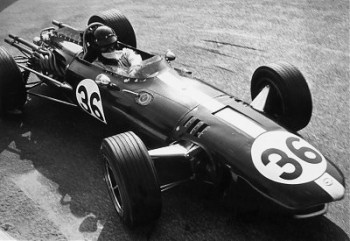 © LAT USA Gurney won four world championship Grands Prix during this time and three more non-championship F1 races of which there were many in those days. He finished third in the 1961 world championship, tied with Stirling Moss, and was fifth in the championship in 1962 and '63, sixth in '64, and fourth in '65. And of course at the Belgian GP at Spa-Francorchamps in 1967 Dan became the only American driver to ever win an F1 race driving his own car, the beautiful Gurney/Weslake V-12-powered Eagle mk 1. With due respect to Mario Andretti, it can be strongly argued that Dan was the fastest American Grand Prix driver we've ever seen. He started from the front row twenty-two times in 86 world championship F1 starts and recorded fastest laps and track records at true driver's tracks like Spa and the Nurburgring. Famously, he was on the pole at Spa in 1964 with a Brabham, set a new track record in the race and would have won had he not run out of fuel on the second-last lap. At the German GP at the 'Ring in 1967 he set a new track record and was leading by almost a minute when a driveshaft broke. As a long-distance sports car driver Gurney was as good as they come. He won the Sebring 12 hours with Ferrari in 1959 and the Tourist Trophy six-hour race at Goodwood too. After leaving Ferrari to drive for BRM in 1960, Dan drove some sports car races for Lucky Casner's Camoradi team aboard a Maserati T60. At the Nurburgring 1000Ks Gurney was teamed with Stirling Moss and the pair came back from a pitstop to replace a blown oil line to catch and pass Ferrari's team of three cars in pouring rain. It was one of the most classic comeback victories ever seen at the 'Ring. Dan also scored a famous win in the inaugural Daytona international sports car race in 1962. Then of course there's his Le Mans victory with Foyt and Ford in '67, and many great showings in the old Can-Am series. Gurney was the only man to win a Can-Am race for Ford, driving his own AAR Lola-Ford to win at Bridgehampton in 1966. He also won a Can-Am race at Mosport in 1970, driving in place of Bruce McLaren who had been killed while testing the latest McLaren Can-Am car the previous month. Dan's victory at Mosport helped pull the McLaren team together after the death of its founder and driving force. And of course, Gurney was a true all-rounder like few other drivers in the history of the sport. He dominated the NASCAR races at the old Riverside Raceway which was essentially his home track. Dan was renowned as the 'King of Riverside' and he added to his reputation by winning the January 500-mile NASCAR race five times over seven years between 1963-'68. And in the last three Indy 500s Gurney started he finished second in 1968 and '69 and third in 1970. 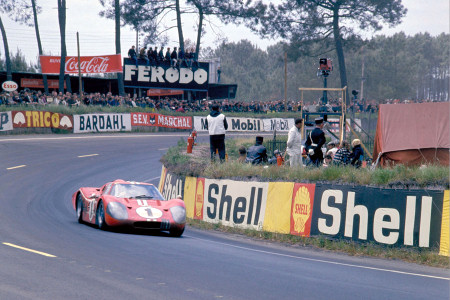 © Ford Motor Co. In addition to Gurney we saw A.J. Foyt and Parnelli Jones, Indy 500 winners both in the early sixties, also go on to build and race their own Indy cars. Foyt called his cars Coyotes and raced them through the late sixties and seventies. Foyt and Parnelli's Indy cars were equally successful through that time and of course Parnelli built and ran an F1 car for Mario Andretti for a few years from 1974-'76. Parnelli also brought the Cosworth revolution to Indy car racing in 1976 with a new F1-based Cosworth-powered car designed John Barnard and driven successfully by Al Unser. Then of course, there's Jim Hall, the Chaparral man, documented in last week's column. The tall Texan was an excellent driver, the winner of many American sports car races who raced F1 cars briefly in 1963 before returning to the USA to focus on his revolutionary series of Chaparral Can-Am and long-distance sports cars. Nothing quite like them had been seen before, nor since. And there's Roger Penske, a very respectable driver who founded Penske Racing in 1966 with Mark Donohue as his number one driver as well as team manager and chief engineer. Penske and Donohue were a rare combination, racing many different types of superbly prepared and presented cars with considerable success and setting a new standard for the sport. Team Penske continues today as race winners, championship contenders and standard setters in both NASCAR and IndyCar. Nor we can forget that Mario Andretti was also a child of the sixties who went on to establish himself as one of the most versatile and enduring drivers in the sport's history, spending the last twelve years of his long career as a founding father and driving force of Newman/Haas Racing. The Unser brothers also loomed large through the sixties, seventies and into the eighties. Bobby was one of the most hard-driving development drivers the sport has ever seen, playing a big role in the success of All American Racers' Eagles in the seventies and Penske's Indy cars in the late seventies and early eighties. Younger brother Al was much quieter and more laid-back but was equally successful with Parnelli's team and later with Penske. 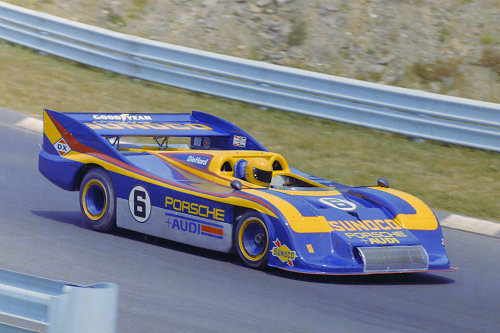 © Dan Boyd Others include Louis Meyer, the first three-time Indy 500 winner who went on to found Meyer-Drake Engineering, builders of the venerable Offenhauser engine; Harry Hartz, the 1926 AAA champion who won the 500 as a team owner in 1932; Frank Lockhart, rookie Indy 500 winner in 1926 who built and developed his own cars over the next two years as well as his twin-engine Stutz Blackhawk land speed record car. Nor can we forget Tommy Milton and Jimmy Murphy, Indy 500 winners and AAA champions who also built and drove Milton's land speed record car. Murphy of course, famously won the French GP in 1921, leading the Duesenberg team to the only all American win in early Grand Prix history. The list goes on with the likes of the Chevrolet brothers, Arthur, Louis and Gaston, racers and car builders from the WWI era who fathered one of America's most popular automobile brands. And of course, Ray Harroun, winner of the inaugural 1911 Indy 500, who was an engineer, development driver and racer for the Marmon Company. Then there's Enzo Ferrari, the quintessential driver, mechanic, team owner and car builder. Sixty-eight years after his company's founding Ferrari's cars and brand define racing and high performance automobiles to the wider world. I've omitted many others from this brief overview but the point is clear. For most of the sport's history many of the greatest drivers were also master mechanics, car builders or engineers who ran first class, boundary-pushing race teams. 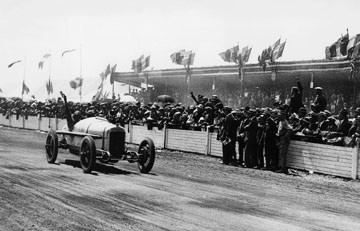 © LAT USA But today's rules don't allow them to pursue anything like the creative paths trod many years ago by Dan Gurney, Penske and Mark Donohue, Jim Hall, Jack Brabham, Bruce McLaren and John Surtees. The spec car syndrome has driven out the independent thinking that propelled these and many others in days of old. Yet at the same time the sport has become too complex, requiring far too many engineers specifically and people in general. Back in the halcyon days of the sixties and seventies the sport remained much as it had from its beginnings with tiny, two and three men teams building and racing their cars. It was much more personal, more open to the public and more appealing too. We've lost not only the attraction of the great men of the past but also the unique machines they conceived, built, developed and raced. Allow me to repeat four key dates marking the decline of American motor racing. The last time an all-American team won the Le Mans 24 Hours was back in 1967--48 years ago--when Gurney and Foyt drove a factory Ford mk IV to a dominant victory. The last American team to win an F1 race was Penske Racing with John Watson in Austria in 1976. The last American driver to win an F1 race was Mario Andretti in Holland in 1978. And the last Indy 500 won by an American-built car occurred back in 1982, a third of a century ago, when Gordon Johncock won aboard one of Pat Patrick's Wildcats. Over the past twenty years Indy car racing has been victimized by the most gross mismanagement--commercially and technically--of any sport in human history. But in the past thirty years something has also happened deep within the cultural soul of the United States wherein the fresh spring of creative water that gave us the likes of Dan Gurney, Jim Hall, Roger Penske, Mark Donohue, Tommy Milton and Jimmy Murphy has run dry. |
|
Auto Racing ~ Gordon Kirby
Copyright ~ All Rights Reserved |
